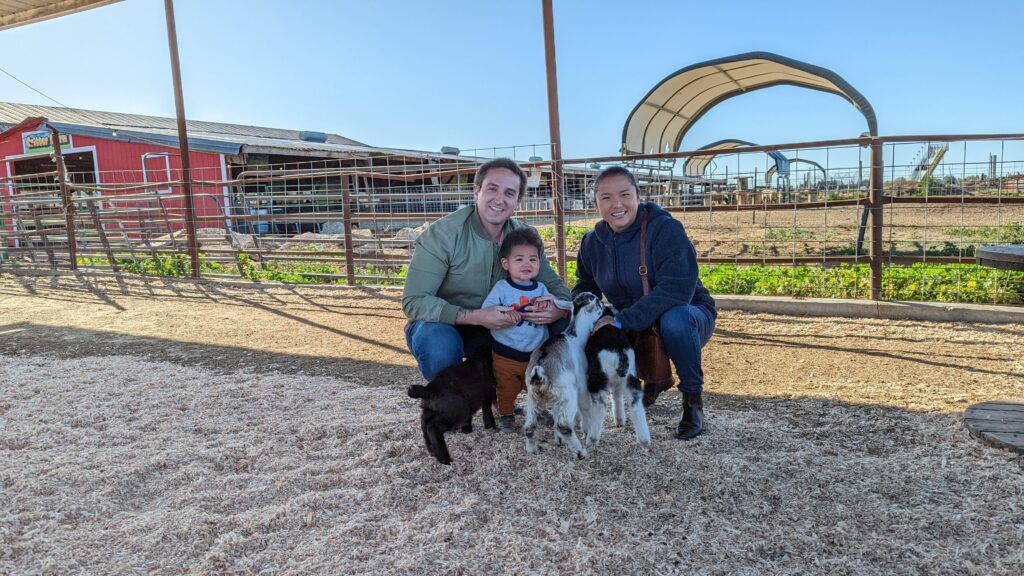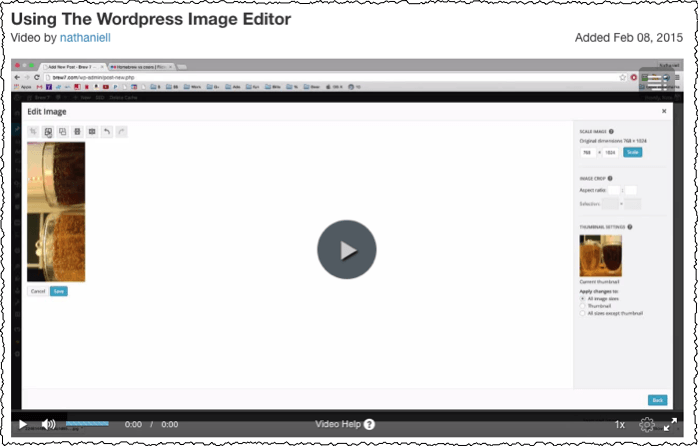
Even if you write a masterpiece, if it’s not structured in an interesting way, it’ll likely be lost in the mire of internet content. The actual message of your content is only part of the formula of making affiliate sales, and how your blog post looks can be equally important.

Are You Ready To Work Your Ass Off to Earn Your Lifestyle?
Are you tired of the daily grind? With a laptop and an internet connection I built a small website to generate income, and my life completely changed. Let me show you exactly how I’ve been doing it for more than 13 years.
In order to draw readers into your blog posts where you have a chance of making some money, you need to make it interesting. This post discusses six simple ideas for structuring your blog posts so that people want to read what you’ve written.
Too many newbies just write a wall of text, hit publish, then hope for the best. These six tips will not make you magically rank, and it certainly won’t guarantee conversions. However, these tips will get you moving in the right direction with simple ideas that many people forget.
Video Version: Make A Beautiful Affiliate Blog Post
1. Use Small Paragraphs
Pay attention to the size of the paragraphs. Though writing your articles like an essay is good practice for organizing your thoughts and pumping out content, I rarely stick with the style of having one idea be one paragraph. It’s just too much content. Considering many people read websites on mobile devices or small laptop screens, anything more than 4-5 sentences can be an intimidating wall of text. You aren’t writing for the New York Times – use small paragraphs!
Good spacing makes the reading flow a lot better. Small paragraphs are the most readable and can keep a reader moving through your page.
Personally, the longest paragraph I use is maybe two to three sentences long. That may not seem like a lot, but when you look at the blog post itself, you’ll see how your work takes up more space than you think it will.
One sentence takes up two lines. I try not to take up more than three or four lines. Even four lines can look pretty big.
If you do go over four lines for a single paragraph, your text is going to be too chunky and too hard for the average reader to read. They’ll see it and immediately they’ll want to skim it without paying attention to it.
Pro-Tip: One of the first recommendations I can make is to use a word processing platform rather than writing your post directly in the WordPress editor. It’ll save you the headache of losing your progress if WordPress bugs out or your internet crashes. It happens all the time.
2. Organize Your Title, Main Headings, Sub-Headings
As you write your blog post, don’t forget to use headings and subheadings to title sections of your content. I like to use h3 for headings and h4 for subheadings, but you could do h2 and h3 if you want, depending on how your theme’s code is written. I’m doing it on this page, with each tip as an h3 title, and some tips require further explanation, so I use h4 headings to further structure out those ideas.
Breaking up your text with headings and sub-headings will help a lot with spacing issues. They’ll look a little bit different for each theme, but overall they’ll break up long ideas and make the page look more variated. This will help with skimming the article, for folks that just want the gist of what you’re saying before they dig into the article.
I also like to include a table of contents with clickable text links to teach section for really long articles. No one wants to skim a 4,000 word article! Providing a preview and a method of skipping any introduction topics can get a larger portion of people that visit your page, to actually stay on your page.
3. Add an image
Once the text is in place, you’ll want to add an image. It’s a good way to add a little bit of color and a little bit of engagement to your post. I put my image at the top of the post, just underneath the title.
A good picture introduces the post, gives people an idea of what it’s about, and provides a general tone or feeling. Once your visitors are hooked, they can go through and read the information they came to your page to get.
Finding an image
A lot of people have trouble with images. For starters, they don’t know where to find free images they can use with their blog posts.
I personally like to use Flickr. Once I’m on the Flickr site, I usually choose to search for images based on license. I want the Creative Commons license so I can use the image with very simple link attribution. With this license, I can basically do anything I want to the image as long as I give the person credit.
Rather than waste a lot of time looking for an exact image, I like to find images around a broad idea related to my blog post.
For example, if I’m writing about how to prime beer bottles when you’re bottling your home brew, I probably won’t be able to find an exact picture for that. Instead, I look for something similar but broader, like beer bottles or a fizzy beer, since “priming” is what creates carbonation in the beer.
Don’t use too large of an image! Anything over 1,000 pixels wide is probably too large for your website, and will take too long to load. Keep images an appropriate size for the width of your blog post.
Adjust the picture to fit your post
Once an image has been added to the library, you can give it a title and/or a caption.
Instead of having huge pictures that people have to scroll past, consider making a smaller rectangle version of the picture you’d like to use.
Use the edit image tools and get a focal point of the image. Drag the lines to get the image to the size and shape you want. Then click the ‘crop image’ on the upper left hand side of the WordPress image editor. Save it.
If the picture is too wide for your post, you can go to the ‘scale ‘section in the upper right of the ‘edit image’ window. If you change the pixel width and click scale, you can make the image smaller without losing its proportions.
Insert your Image and check it in preview
Now that your picture is uploaded and sized the way you need it to be, you can go back to your post page and insert the image into the post. I usually put my image right under the title.
One thing to note is that if you right-align or left-align your image, it will squish the text around the picture. It might look great on your editing window, but if you click preview, you’ll notice it’s almost too messy to read.
A good option is to center-align every image you use in your blog post.
One great image at the top of a blog post is generally enough. You can add more if you’d like to, but it will take you more time and it’s not always necessary.
Give attribution
For images like the ones I get from Flickr, the nice thing to do is to give an attribution to the artist or photographer.
Scroll to the bottom of the post and type ‘photo credit’ and then the name of the photographer. The next step is to highlight the name and create a hyperlink back to the photographer’s Flickr profile page. You can also include a copy to the license page, proving to any reader that this image was licensed properly.
You can also use other sites that do not require attribution, like Pixabay.
4. Add Videos
Adding a video is another great way to increase visitor engagement on your website. I embed videos in the text editor tab of my blog post editing page. To do this, all you have to do is copy and paste the video URL in the text wherever I want the video to show up.
Videos can also help your SEO for the page, and keep people on your page longer. Of course, it’s best to make your own, original videos to help build your brand. Plus, the videos can drive traffic to your website hosted content too! However, embedding videos is a native feature to YouTube, so it’s easy to feature professionally made videos on your website. Leveraging other people’s content to increase the value of what you created!
5. Include both internal and external links
Adding links helps readers find other resources and gives your website more credibility. It also means you don’t have to create a giant 5k word post for every topic. Linking to external websites or internal resources can show people where they can read more about related topics.
Both of these items can help your SEO for the page simply by linking relevant content. Internal linking is also a great strategy for helping other pages on your site rank. It’s not a magic button to rank any page, but when linking relevant pages to each other, it signals to Google what your site focuses on, and can help you rank for those terms.
6. Use A CTA For Engagement
At the bottom of the blog post, include a question that will entice people to comment and interact with you on your website. You could ask them about their experiences related to what they just read about or to provide helpful hints and suggestions.
Alternatively, you could make your “Call to Action” something about buying a product, or visiting another page on your website. Decide what you want the reader to do next, otherwise, they’ll just close out your page and might not come back!
Conclusion
These are just some basic tips to get you started. As you write more, you’ll just be able to freestyle your content structure as you write, and you won’t need a template. Once you get the basics down of writing content for your site, it’s time to improve your review-writing skills.

Nathaniell
What's up ladies and dudes! Great to finally meet you, and I hope you enjoyed this post. My name is Nathaniell and I'm the owner of One More Cup of Coffee. I started my first online business in 2010 promoting computer software and now I help newbies start their own businesses. Sign up for my #1 recommended training course and learn how to start your business for FREE!


 How to Write a Basic Article for an Affiliate Website
How to Write a Basic Article for an Affiliate Website
Sandeep
Sir i want to ask u a question? Can i create a blog for affiliate programs? And how can promote the products. I have no idea about it
Nathaniell
You can learn how to do that starting here.
Sandi/Artsy Craftery Design Studio
Great tips! Thank you for being so thorough.
Erin Carr
Hi there. I’m a total newbie at all of this so I know this is a dumb question but I’m going to ask it anyway. I’m trying to come up with a way to make money from home and I stumbled across your website. You make it all sound so doable so I’ve been trying to come up with an idea of my own so that I can actually start. My question is…Do I need to come up with an actual product to sell? Or can I basically just do a blog and make money by having ads on the blog? I don’t have an actual product to sell so I’m kind of assuming this whole plan isn’t for me, huh?
Nathaniell
YOU do not need a a product to sell. You just need a website topic. You can sell other people’s stuff online and make a commission. For example, you can sell a toaster for $50, make 5%, then earn $2.50 per sale.
That’s not much money, but there are millions of people online, so if you can sell 100 toaster a day, $250/day!
Or you can promote something more expensive like a cruise to Hawaii, PC parts, or digital subscription services for recurring commissions. ANYTHING works.
Having ads on the blog is another method, which I outline in my post about display ads.
So Erin, this system can totally work for you! As long as you are OK writing articles for your website, on a topic you choose (I’ll help you pick one) then I think this could be a good training course for you (that’s where I learned, and it’s free to try)
PS. Notice I don’t have any of my own products listed on my website?